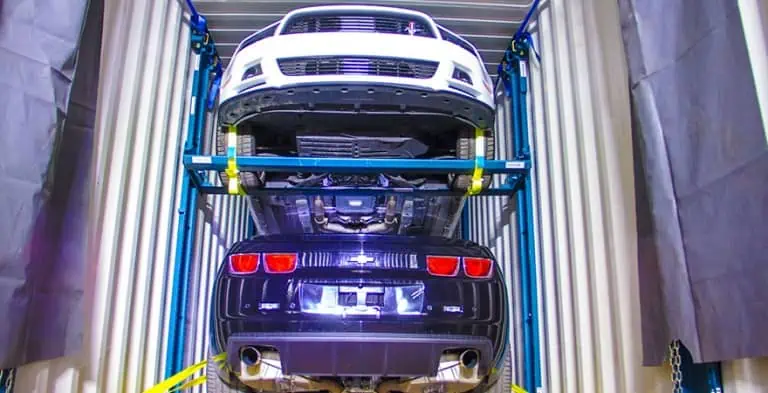If you’ve shipped a car, you know that car sales fraud can be a serious problem. Not only can it prevent you from getting your dream car, but it can also cost you thousands of dollars.
Some predatory sales people will sell cars they aren’t the rightful owners of or mix-and-match documents with vehicles they don’t belong to, in order to make a profit. These people often prey on foreign buyers because there’s less of a chance of legal action being taken against them if they get caught.
Not all car sales fraud is intentional, though. Sometimes the vehicle’s seller genuinely wasn’t aware that there was a problem with their vehicle’s documentation because they have never gone through the process of preparing the vehicle for export. In these cases, the seller is usually willing to work with you to resolve the problem and complete the sale.
Be alert and cautious when buying a car from overseas and you can easily stop yourself from becoming a victim of fraud and taking on a huge loss. Without further ado, let’s get into our 6 Tips for Avoiding Car Sales Fraud.
- Get a copy of the seller’s ID
Before paying the seller, you should ask them to provide you a copy of their ID. This is important for a couple of reasons.If you end up needing to file a police report for a fraudulent sale, providing this ID to the authorities can help in the process. However, it’s also important to have the seller’s ID so you can check that there is a complete ownership trail (more on this in #6 below). - Get copies of the car’s documents
Before paying the seller, you should also request copies of all of the car’s documents. The most important document is the Title. Don’t buy a car if you don’t have a copy of its Title. You should also verify that the seller has signed the Title to release their liability of ownership and has written your name as the buyer of the vehicle.If the seller has any supplementary documents, such as a registration, bill of sale from when they purchased the car, a lien release letter, or recent service records, request copies of these as well. - Get a photo of the car’s VIN plate
Next, you should request a photo of the vehicle’s VIN plate. This is important because the biggest issue when buying a vehicle from overseas is that the VIN on the vehicle’s VIN plate doesn’t match with the VIN on the vehicle’s Title. In the case of a VIN mismatch, US Customs and Border Protection will not allow the vehicle to be exported and it will be stuck at the border.Once you have a photo of the vehicle’s VIN plate, check that the VIN on the VIN plate matches the VIN on the Title exactly. If there’s not a match or if the VIN plate seems like it has been tampered with, don’t be afraid to pull the plug on the sale. - Use a service like Safe Pay
As mentioned above, the #1 issue when exporting vehicles is that the VIN on the vehicle’s VIN plate doesn’t match the VIN on the vehicle’s Title. In these cases, US Customs and Border Protection will seize the vehicle and will not allow it to be exported. There’s nothing worse than paying thousands of dollars for your dream car and finding out that it’s stuck at the border and there’s no way for you to get it to your home country!To avoid this, CFR is proud to offer CFR Safe Pay. With Safe Pay, we’ll hold on to your funds for the purchase of the vehicle until our technicians have personally verified that the VIN on the VIN plate matches the VIN on the Title. If there’s not a match, your money is safe and we’ll send it right back to you. If the VINs do match, we’ll transfer the funds to the seller to complete the sale. Ask your CFR representative about using CFR Safe Pay for your next shipment! - Check for any inconsistencies
Once you have the seller’s ID, the vehicle’s documents, and a photo of the VIN plate, you should go through all the documents and check for any inconsistencies. Are there any cases where the VIN isn’t an exact match? Is the year, make, and model of the vehicle always reported the same? Is the seller’s name on the documents? Are the service records consistent with what the seller communicated to you? Does anything seem “off”?If anything seems fishy… it probably is. Ask for clarification from the owner if there are any details that don’t seem legitimate, and don’t be afraid to call it off if you suspect a fraudulent sale. - Check for a complete ownership trail
Another important thing to verify is that there is a complete ownership trail. In cases when the seller has the car registered in their name, this isn’t an issue. It is quite common, however, for people to buy a car and re-sell it without first registering it in their name. In these cases, the seller’s name will not be written on the Title as the owner. You should verify that there is a complete record of ownership to ensure the person selling the vehicle is its rightful owner. If US Customs finds a vehicle reported as stolen, they will seize it and not allow it to be exported.Let’s say Person A sold the car to Person B, but Person B never registered it in their name. You are buying the car from Person B. Person A’s name is on the Title, so you will need to request a copy of the bill of sale from when Person A sold the car to Person B to verify that Person B is the rightful owner of the car. If there is no bill of sale verifying this sale took place, Person A may still be the legal owner of the vehicle, and Person B may be selling the vehicle to you fraudulently.
While there are certainly risks involved with buying a car from overseas, using some caution during the process can save you a serious headache—and serious money. We hope these tips help you navigate purchasing cars from overseas in the future.
Once you’ve arranged your next vehicle, request a quote for getting it shipped straight to your door! Our Sales team is always happy to help.
– Team CFR



